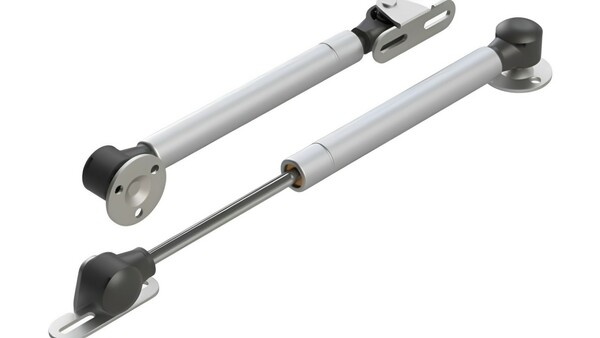In product development, the journey from concept to market-ready involves a delicate dance of creativity, precision, and efficiency. At the heart of this process lies prototyping, a crucial phase where ideas are transformed into tangible prototypes for testing and refinement. Within this landscape, industrial gas springs emerge as unsung heroes, playing a pivotal role in shaping the trajectory of innovation.
Fueling Prototyping Precision
Prototyping serves as the bridge between abstract ideas and tangible realities, allowing designers and engineers to iterate, refine, and validate their concepts before full-scale production. In this iterative process, precision and control are paramount, and springs offer a compelling solution.
Springs provide smooth and controlled motion, enabling engineers to simulate real-world conditions with precision and accuracy. Whether it's replicating the opening and closing of a cabinet door or mimicking the suspension dynamics of a vehicle, springs deliver consistent force and motion profiles critical for evaluating performance and functionality.
Streamlining Development Cycles
In today's fast-paced business landscape, time-to-market can make or break a product's success. Here, industrial gas springs emerge as catalysts for accelerated development cycles. Their versatility and adaptability allow for rapid prototyping and iteration, empowering teams to explore multiple design variations quickly.
By integrating springs into prototype assemblies, engineers can swiftly evaluate different concepts, identify strengths and weaknesses, and make informed design decisions early in the development process. This agility not only accelerates time-to-market but also minimizes costly design changes down the line, enhancing overall project efficiency.
Enhancing User Experience
Innovation extends beyond functionality; it encompasses the user experience—how a product looks, feels, and interacts with its users. Springs play a crucial role in this regard, enabling designers to create prototypes that not only function flawlessly but also delight users with their intuitive operation and ergonomic design.
Gas springs facilitate the creation of prototypes that closely resemble the final product's behavior, allowing designers to gather valuable feedback from end-users early in the development cycle. Whether it's testing the ease of opening a laptop lid or the responsiveness of an adjustable office chair, gas spring-powered prototypes offer a glimpse into the future user experience, driving iterative improvements and ensuring customer satisfaction.
Facilitating Innovation Across Industries
From automotive to aerospace, furniture to medical devices, springs find applications across a diverse range of industries, each with its unique prototyping challenges and requirements. In automotive design, for instance, springs simulate the behavior of complex mechanisms such as tailgates and hoods, enabling engineers to refine ergonomics and optimize functionality.
In furniture design, springs enable the creation of adjustable desks, ergonomic chairs, and space-saving storage solutions, enhancing comfort and usability. Similarly, in medical device development, springs facilitate the prototyping of patient positioning systems, surgical instruments, and rehabilitation equipment, contributing to improved patient outcomes and caregiver efficiency.
In the ever-evolving landscape of product development, industrial gas springs emerge as indispensable tools for prototyping and innovation. Their precision, versatility, and ability to streamline development cycles empower designers and engineers to bring their ideas to life faster, more efficiently, and with greater confidence. As we look to the future of innovation, the role of springs in shaping tomorrow's products and experiences cannot be overstated.



